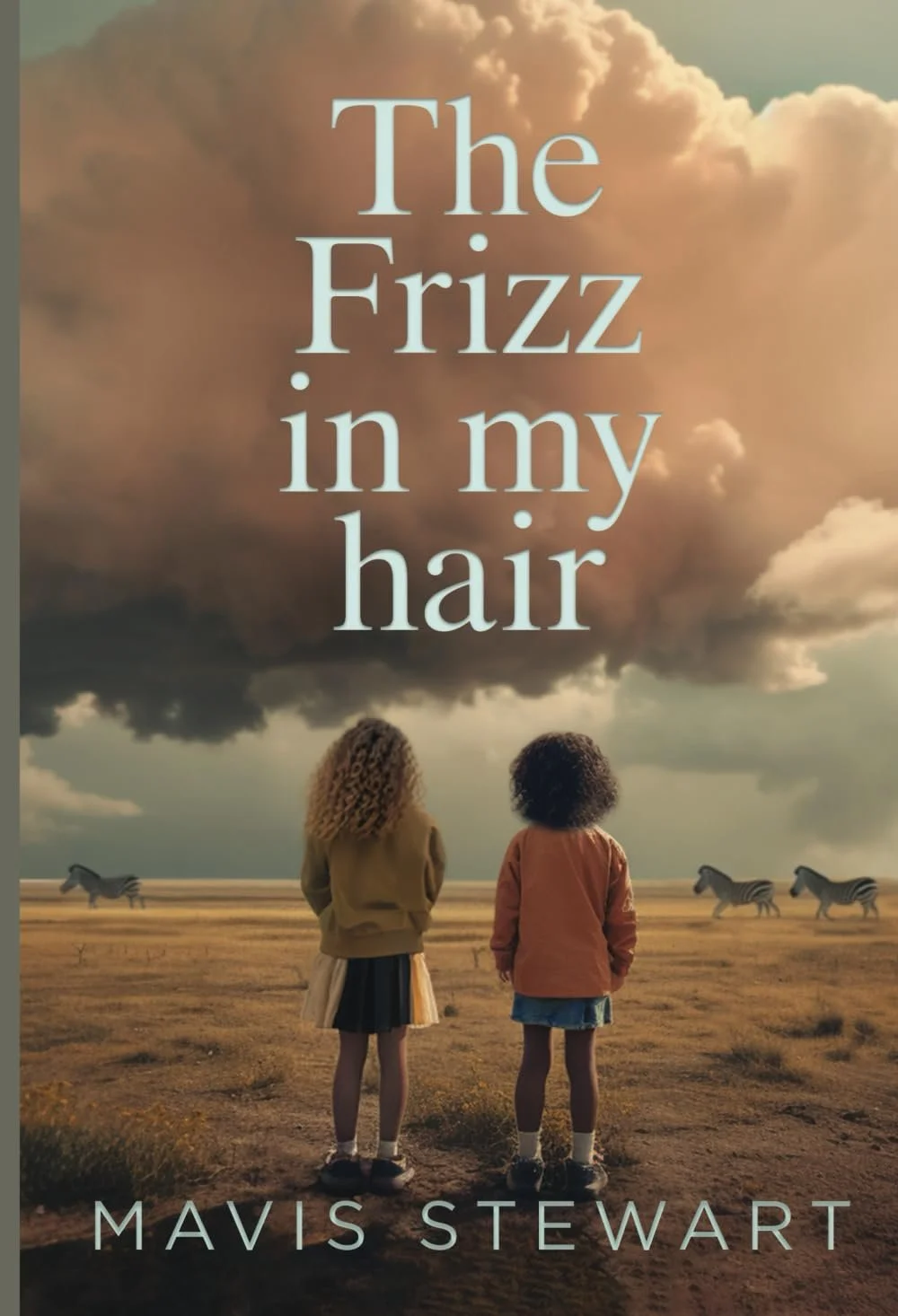The Frizz In My Hair, by Mavis Stewart
BOOK REVIEW
Imagine a group of people ripped from their homes, their families, their histories, robbed of their languages and their names. Now, picture those people raising the children, feeding the families and building the homes of their kidnappers and oppressors. Imagine, then, the resilience and creativity of these people, the ancestors of Coloured people, in taking a language used to subjugate and disempower them and turning it into something that is their own.
About the Author
Mavis Stewart is a Zimbabwean-Australian debut writer, with a novel perspective about the coloured community to share with her debut book The Frizz In My Hair. Her intention in writing this book was to see her Coloured heritage inked into the literary landscape.
© Mavis Stewart
A Community Apart
The Frizz In My Hair is a historical fiction novel released in November 2024. The book delves into the experiences of the Coloured community throughout several decades during the colonial period in Southern Rhodesia, which later became Zimbabwe after independence in 1980. Coloured peoples consist of persons of mixed African, European, and Asian heritage. Comprising a significant cultural and demographic across Southern Africa.
In literature, South African novelist Bessie Head who wrote influential works such as ‘Maru’ and ‘When Rain Clouds Gather’, is arguably the most prominent Coloured fiction writer from our region. Coloured peoples have largely been diminished to secondary characters in literary portrayals. Stewart’s book is a commendable submission that shines a light on the erstwhile obscured Coloured histories.
“It was a race that floundered as it tried to find its own identity, adopting those traditions that had been forced on it and making them its own. Its people clinging onto each other for support, as it limped towards preserving itself, through self-isolation.”
Survival & Self-Definition
‘The Frizz In My Hair’ takes a intimate, familial approach to telling the history of coloured Zimbabweans. The novel begins with the story of Indian migrant Ahmad and Esnart in segregated Rhodesia. Their union creates the genesis of a generational ballad, focusing on several female characters namely:
Esnart, Esther, Clara, Sonia, Peggy, Sue, and Angie.
As the story develops, our cast of female characters though victims of circumstance, manage to carve out live through exercising agency in whichever limited ways possible. The domestic small battles our female characters face, are mirrored in the public political strife Southern Rhodesia experienced throughout the duration of the story. Stewart ever reminds the reader of the precarious and unique position Coloured peoples occupied in society dictated by the infamous Colour Bar.
‘The coloured community was a mishmash of Bantu, Asian, and European, with tones of pale café au lait so that you could hardly tell, to coffee with just a dash of milk. It was a tapestry of tight and springy strands uncoiling leisurely into those that were soft and silky. It was a race with a mixed heritage, a unique blend of cultures and histories, that gave it a broader perspective and understanding of the world. And had it been allowed to embrace its ancestry; its blended heritage would have proved to be its greatest privilege and the core of its strength. But instead, it was denigrated for the interracial relationships that had.’
The book does not shy away difficult experiences, such as gendered violence our female protagonists face throughout decades of tumultuous Rhodesian life. Or the forced displacement of coloured children from African families by the Rhodesian state. The novel is also a love story. Exploring devotion, obsession, betrayal, duty, and servitude. At each significant turning point of the story, a character is faced with a pivotal choice, where faith in love is a salve and redeemer.
Verdict
© University of Cape Town Press
‘The Frizz In My Hair’ is written by Stewart with a clear compassion for her community. While laudably ambitious for a debut, particularly in its efforts to cover a diverse cast of characters spanning decades. The narrative could have been more concise, especially in the opening chapters. In the beginning, the story struggles to clearly outline its setting and time frame. As the novel develops, the narrative becomes progressively stronger as Stewart finds her footing and confidence. The reader gets a closer glimpse into the motivations of latter characters like Peggy and her daughters Sue and Angie. As the book title suggests the reader learns that texturism and featurism are prominent conundrums for Coloured people. Choices made by characters attain a more complex and intriguing aspect, which culminates in a poignant and thoughtful ending.
I recommend ‘The Frizz In My Hair’ to readers who wish to learn more about the internal lives of the Coloured people in Zimbabwe. It is an intimate look at a family that attempts to carve a space out for itself in spite of the wider forces of a prejudicial society and state pulling it apart.
Copies of The Frizz In My Hair are available for purchase via Amazon here.
Written by - Tondi Mudambo




